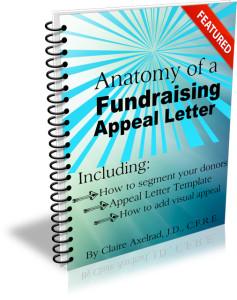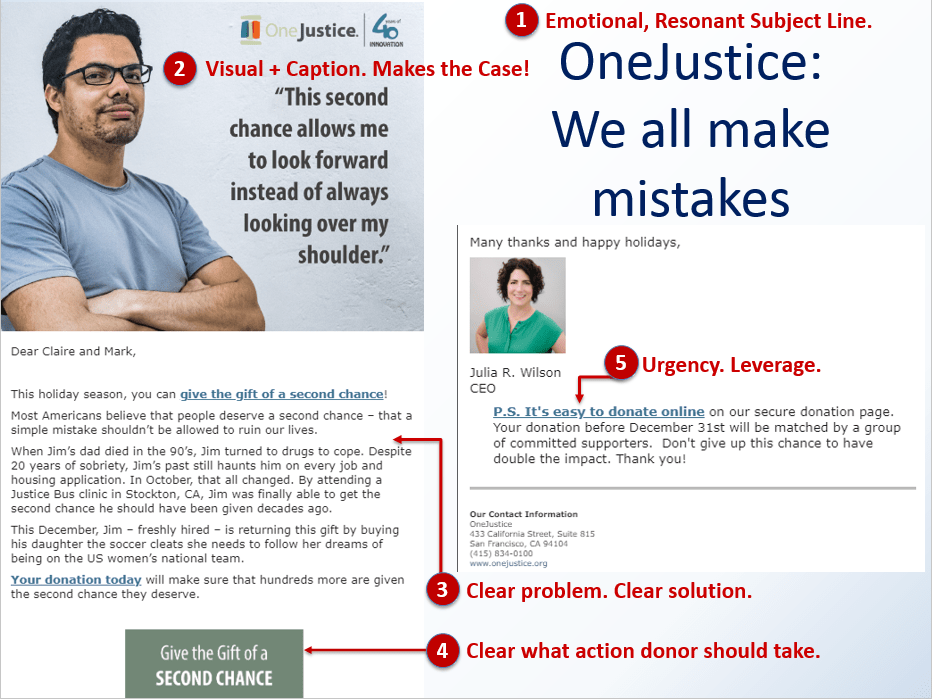 ‘Hand-Me-Downs’ is a new Clairification School feature, based on my lifelong love of borrowing, sharing, recycling and upcycling.
‘Hand-Me-Downs’ is a new Clairification School feature, based on my lifelong love of borrowing, sharing, recycling and upcycling.
Why reinvent the wheel when someone already invented a perfectly good one?!
I’ve found there are very few new ideas in the world.
When I come across a good one, I like to borrow it. I urge you to do so as well.
Don’t exactly steal, of course. Plagiarism isn’t okay. But… it’s fine to imitate. After all, it’s said to be the sincerest form of flattery! In fact, if you come across a fundraising strategy you love, why not ask the organization who created it if you can borrow their format or copy? I’ve had that happen to me from organizations doing the same thing as mine, but in a completely different geographic location. So, there’s no competition for donors. And sometimes we’ve agreed to share ideas back and forth.
So… as I come across examples worthy of your attention, I will hand them down to you!
Here’s today’s hand-me-down year-end email appeal, courtesy of OneJustice in San Francisco California. They bring life-changing legal help to those in need by transforming the legal aid system.
1. Emotional, Resonant Subject Line.
If you don’t entice people to open your email, you’ve wasted your time and resources.
The subject line of an e-appeal is like the envelope of a mailed letter.
This one is good because it’s emotional and relatable: “We all make mistakes.”
We all do. And we all want to be forgiven for them.
Plus, it’s intriguing. It makes the reader ponder: I wonder what mistake someone made? I have to find out!
Good subject lines capture attention quickly, arouse curiosity and are related to the subject matter inside.
For more on e-appeal subject lines, read: You Deserve to Rock Nonprofit Email Subject Lines!
2. Visual + Caption Makes the Case.
Pictures really are worth 1,000 words. And when it comes to e-appeals, where you don’t have as much space as with a direct mail appeal, this is important!
Choose a photo that tells your story.
Headshots are always good, especially if you can connect with the person’s gaze. This makes it personal.
To be honest, this one could have been improved if it also showed a background that gave a clue as to what Jim’s new job is. That would tell more of a story. Similarly:
-
A homeless man sitting on the street with a change jar tells more of a story than just a male headshot.
-
A first-generation graduate wearing a graduation gown and holding a diploma tells more of a story than just a female headshot.
-
A kid sitting down to eat a hot meal tells more of a story than just a headshot of someone with a lean and hungry look.
And so on. Sometimes you don’t have the right photo, so you do your best. But it’s good to know what to look for.
Captions can add in the verbiage you need to tell the rest of the story and make it more resonant and emotional.
What’s nice about this photo is there’s plenty of white space for layering in the caption. This makes it big and bold, rather than a smaller caption underneath the photo. And the man appears healthy and confident, as if he really believes he’ll succeed — thanks to the donor’s help.
3. Clear Problem and Solution.
Folks won’t give to you simply because you exist. Or because you’re nonprofit. Or because you’re a ‘do-gooder.’ It takes more than that to capture people’s imaginations and inspire philanthropy.
The problem has to be vital, and the solving of it relevant, to donors.
It’s not enough that you think it’s important.
There are at least nine different ways in which a problem will capture a donor’s attention.
The problem must also have a clear solution so that solving it does not seem daunting.
If you just lay out the problem generally (e.g., “at-risk kids need our help”) it’s too difficult for the donor to visualize how their gift will help. The problem seems endless, and they’ll think their gift will be a mere drop in the bucket.
This appeal specifies the solution to Jim’s problem was attending a Justice Bus clinic (which happens to be just one of the programs run by One Justice). So donors know their gift will go for this purpose. And they’ll feel good they’re giving the gift of a second chance — because it’s a gift they’d like to be given to them.
4. Clear Desired Action Response.
Don’t ask your donor to choose among a variety of actions. Sometimes appeals will include too many options (e.g., “Learn more;” “Sign up;” “Attend,” and “Donate”).
Only offer people one option in an email appeal: Give now!
Words do matter, and you have choices about what language to use on your donation “button.”
I love that this one uses “Give” rather than donate (everyone loves gifts and thinks they’re generous), and that it’s specific about what the gift is for.
See more in “How to Choose the Most Effective Fundraising ‘Ask’ Words.”
5. Urgency and Leverage.
Donors get a lot of end of year appeals. Why should they give to yours?
There are two things that may tip donors over the fence, onto your side: urgency and leverage.
If the need is urgent it gets priority attention.
This is why people give to emergency appeals without even thinking twice.
You don’t want to cry wolf, but there should be a way to make it clear donors need to respond to your appeal now. In this case, One Justice used the year-end deadline in combination with a matching grant. The latter is considered leverage.
People love a bargain that enables them to leverage their money.
-
It can be the opportunity to double their investment.
-
It can be the opportunity to buy more for less (food banks will say “Your $1 buys 4 meals” because they get a lot of food donated or at cost — so your dollar goes farther than at the grocery store).
-
It can be giving someone a hand up by teaching them to do for themselves.
-
It can be buying a well that provides water for an entire village.
Hand-Me-Down Copying Caveat
Don’t just copy someone else’s work like a monkey. Try to first understand what makes any given donor communication effective.
First, consider why you liked it. What made it work for you? Where did it go awry? How might it be improved?
Think about how you might tweak it for your particular cause, and your target constituencies, to make it work even better.
Copy with intelligence.
Thoughtless cutting and pasting is not necessarily effective.
But creative mimicry can work out just swell! First understand:
(1) why what you’re emulating worked for whoever you’re borrowing it from, and
(2) what about that strategy will likely work for you.
If you’ve never heard of SOFII, it’s an entire nonprofit website dedicated to sharing great examples. This site is especially good if you’re looking for direct mail examples, but you’ll find a bit of everything here. I particularly like the Jerry Huntsinger tutorials.
You’re welcome.
Want More about Crafting an Effective Appeal?

Super-charge your next fundraising appeal with tried-and-true tips in this 62-page step-by-step guide.
Get Anatomy of a Fundraising Appeal + Sample Template. If you’re ignoring any of the elements that go into making your appeal effective you’re ignoring your organization’s future. But if you follow the guidelines in this Guide, you’ll raise more money.
As with all Clairification products, this comes with a 30-day, no-questions-asked, 100% refund guarantee. You can’t lose!
Image by Thomas Ulrich from Pixabay.






